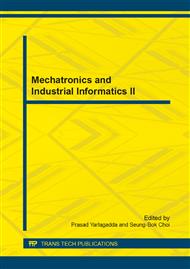p.1003
p.1009
p.1013
p.1018
p.1022
p.1026
p.1030
p.1034
p.1040
The Research on Construction of Open Hierarchical Practical Teaching System
Abstract:
In order to make all students choose their own personal practice activities according to their actual needs, an opening hierarchical practice teaching system is designed. The system can provide an abundant, progressive, alternative, developmental practice way for students to choose their practical activities, which is designed through five aspects such as practical course, course contest, students’ scientific research, participating in teachers’ scientific research, enterprise practice. In addition, the system can make students get what they need, do their best, do their respective development, show their own characteristics; it also enables excellence students to surpass themselves, ordinary students to realize their dreams, students with learning difficulties to complete their studies.
Info:
Periodical:
Pages:
1022-1025
Citation:
Online since:
July 2014
Authors:
Keywords:
Price:
Сopyright:
© 2014 Trans Tech Publications Ltd. All Rights Reserved
Share:
Citation:


